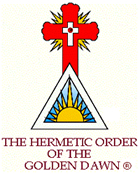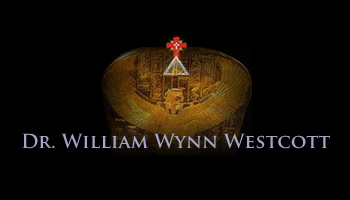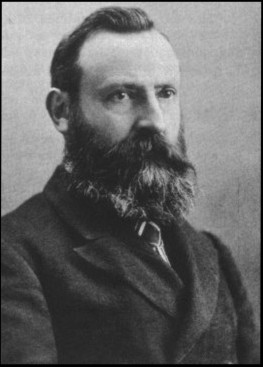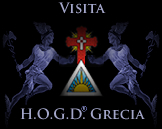Early History
Born on December 17, 1848 in Leamington, Warwickshire, England, Westcott was the youngest of six children, although he often implied that he was an only child, suggesting that he was not close to his siblings. Both his parents died before his tenth birthday. He was adopted by his uncle Richard Westcott Martyn, who, like Westott's father, was a surgeon. Young William attended Queen Elizabeth Grammar School at Kingston-upon-Thames and went on to study medicine at University College in London. In 1871 he became a partner in his uncle's medical practice at Martock, Somerset. It was during this nine-year period of time that he married his wife, Elizabeth Burnett, who did not share her husband's interest in esoteric studies. Their marriage resulted in five children.
Masonic History
Westcott became a Freemason in 1871 when he joined the Parrett and Axe Lodge, # 814 in Crewkerne. He become Worshipful Master of the Lodge in 1874. Westcott joined other lodges, including the Lodge of Brotherly Love, #329 and William de Irwin Mark Lodge, both in Yeovil. He became a member of the Order of the Temple, the Ancient and Accepted Rite, and the Order of the Red Cross of Constantine, progressing to elevated ranks in most of them. In 1886 he became a joining member of Quatuor Coronati Lodge #2076, the premier Lodge of Masonic Research, and in 1893, he was installed as its Worshipful Master. In 1902 he was also appointed Past Grand Deacon in the United Grand Lodge, as well as past Grand Standard Bearer in the Supreme Grand Council.
Following the death of his uncle in 1879, he took a two-year retirement at Hendon, so that he could devote more time to the study of Qabalah, Hermetics, and Alchemy. Westcott's sabbatical was well-spent—he studied the works of Eliphas Levi and began to prepare illustrations for his text on The Isiac Tablet of Cardinal Bembo, a paper he later delivered to the SRIA in1887.
Sometime around 1880, Westcott joined the Societas Rosicruciana in Anglia (the Rosicrucian Society in England, often called the Soc. Ros. or the S.R.I.A.), a fraternity whose membership was restricted to high-ranking Freemasons. In a letter to F.G. Irwin, dated January 7, 1880, Westcott asked to be introduced to Dr. William Robert Woodman, who was then Supreme Magus of the S.R.I.A.
On the medical front, Westcott emerged from retirement in 1881 and was appointed Deputy Coroner for for North-East London and Central Middlesex, a position he held until his retirement in 1918. His medical writings included works on alcoholism and suicide, including his text on Suicide: its History, Literature, Jurisprudence, Causation and Prevention. It seems that few of his colleagues in the medical profession were aware of his esoteric interests.
Over the next decade Westcott's involvement in Masonry and Hermeticism increased. In 1882, he became General Secretary of the S.R.I.A., and in 1892 he was elected Supreme Magus, a position he held for 33 years. He also became an influential member of H.P. Blavatsky's Theosophical Society. Christian esotericists, Anna Kingsford and Edward Maitland, unhappy with the Eastern emphasis of the Theosophical society, resigned from the T.S. in 1884 to form the Hermetic Society, inviting Westcott to join as an honorary member. Later, in 1890, Westcott became a probationer in the Esoteric Section, a body of the Theosophical Society created in 1888 for the benefit of some of the more Western-minded, practical occultists who were included within the ranks of the T.S. It was also during this decade that Westcott would make his most important esoteric discovery.
The Esoteric Order of the Golden Dawn
According to his own version of events, Westcott acquired a mysterious manuscript in 1887, from Reverend A. F. A. Woodford, an elderly Masonic scholar who died shortly after giving Westcott the papers. Written in a cipher that Westcott fortunately possessed the key to, the papers contained the rough draft of a series of ritual initiations. The papers also included the name and address of an enigmatic German Adept. Westcott stated that he wrote to this Adept and received the authority to found the Isis-Urania Temple of the Golden Dawn.
The probable truth about the Cipher Manuscript is that it almost certainly originated from within the Societas Rosicruciana in Anglia and was most likely written by Kenneth Mackenzie, the author of The Royal Masonic Encyclopedia. (The grade structure of the Soc. Ros. was a near perfect match for the grades defined in the Cipher Manuscript.) The ritual outlines contained in the manuscript were originally penned for a Golden Dawn prototype organization known as the Society of Eight, which never fully materialized. The manuscript came into Westcott's possession in August 1886 among assorted papers of the Swedenborgian Rite, which he received from MacKenzie's widow. While the Cipher manuscript is genuine, it is certain that Westcott fabricated the story about Fraulein Sprengel and her letters in order to present the type of pedigree needed to attract high-ranking Masons and other prospective members to Westcott's new Order.
Westcott chose two Rosicrucian Masons to be his companions in this endeavor, Dr. William Robert Woodman, Supreme Magus of the S.R.I.A. and Samuel Liddell MacGregor Mathers. Mathers was a gifted Qabalist, and it was to him that Westcott assigned the duty of fleshing out the initiation rituals outlined in the Cipher Manuscript. But to be certain, Westcott, more than any other individual, was the true creator of the Golden Dawn.
According to Golden Dawn historian R.A. Gilbert: “…it was Westcott, not Mathers, who found the cipher mss, just as it was Westcott who saw what could be built upon them and transformed his vision into reality by creating the Hermetic Order of the Golden Dawn and inventing an appropriate ‘Apostolic succession' in order to ensure its respectability. …It is also clear from the notebook that Westcott's esoteric knowledge was at least as deep as Mathers'—a question never at issue at the time but often subtly posed in more recent years, to the detriment of Westcott, by protagonists of Mathers. What can also be shown is that Mathers himself never doubted that in this field Westcott was his equal.” [1]
According to Ellic Howe: "Although Westcott intended that they should be 'co-equal'...it was he who ran the G.D. during its early years. It was his hobby, his child and largely his creation. 'I claim right and precedence in the origin of the G.D.', he wrote to F.L. Gardner on 5, April 1912, fifteen years after it had slipped from his grasp and a quarter century after he discovered the words 'Golden Dawn' in the Cypher Manuscript. Westcott was the Order's organizing genius...its 'Recorder of Minutes, Superintendent of 5=6 Admissions, Corresponding Secretary and Treasurer', not to mention its Chief Adept in Anglia in 1896. This multiplicity of offices and functions...clearly gave him enormous pleasure." [2]
On February 12, 1888, Westcott, Mathers, and Woodman signed the first pledge forms to the Order, and the Golden Dawn was born. A warrant was drawn up for the first Golden Dawn Temple, Isis-Urania #3 of the Order of the Golden Dawn in Outer in London. In deference to his senior role in the S.R.I.A., Woodman was named Imperator, Mathers was Premonstrator, and Westcott, the organizing genius behind the Order, took the office of Cancellarius. By the end of 1888, Westcott's creation was well underway—the Isis-Urania Temple #3 had thirty-two members. Soon after, two more temples were chartered at Weston-Super-Mare, and Bradford. Others temples were to follow.
Although Westcott had signed the original charter for the Isis-Urania temple with his S.R.I.A./G.D. Outer Order motto, Quod Scis Nescis , “You do not know what you know,” he was better known for his 5=6 motto of Sapere Aude , “Dare to Be Wise,” and later for his 7=4 motto of Non Omnis Moriar , “I shall not wholly die.” In a 1889–1890 issue of the privately printed Transactions of the Soc. Ros, which had a limited readership, Westcott identified himself as “Praemonstrator of the Kabbalah to the Isis-Urania Temple of the G.D.” (By this time Mathers had assumed the office of Imperator.) In his Historical Lecture , Westcott described the Order of the Golden Dawn in the Outer as “an Hermetic Society whose members are taught the principles of Occult Science, and the practice of the Magic of Hermes…”
Dr. Woodman died in December of 1891, and no one was chosen to take his place. Around this time, Mathers finished the ritual for the 5=6, grade of Adeptus Minor, the first grade of the Second or Inner Order of the R.R. et A.C. With the creation of a functional Second Order, Mathers accomplished a restructuring of the Order and became its primary Chief.
Ellic Howe states “According to his letters, Westcott was a gentle, friendly man. The ladies in the G.D. were rather fond of their ‘Sapere Aude', while the male members, some of whom know him as Supreme Magus of the Soc. Ros. after Dr. Woodman's death in 1891, respected him. Their attitude to Mathers was tinged with uncertainty; they never knew where they were with him; conversely they did know where they were with Westcott…” [3]
In 1892, the Mathers and his wife Moina moved to Paris and sent up the Ahathoor Temple #7. Dr. Westcott became the Chief Adept of the Order in England.
In March of 1897, Westcott's association with the Golden Dawn become known to the authorities, when some of his magical papers, inscribed with his name and address, were mysterious left in a cab. The authorities advised him that “it would not do for a Coroner of the Crown” to become known as a practitioner of magic. Westcott resigned from all offices within the Golden Dawn and the R.R. et A.C. He was replaced as Chief Adept in Anglia by Florence Farr. Nevertheless, Westcott remained as a advisor behind the scenes.
During the problematic year of 1900 when Mathers admitted to Florence Farr that Westcott had fabricated the story of Fraulein Sprengel and the German Order which had supposedly chartered the English temples of the Golden Dawn, members of the Order came to Westcott to find out the truth. Westcott rejected the story but offered no proof to the contrary. In effect, he could neither confirm or deny. After the schism of 1900, wherein Mathers was deposed and B.W. Yeats elected to the office of Imperator, Westcott joined Dr. Berridge in running the rival Isis temple that remained loyal to Mathers, and became Praemonstrator of that temple.
After 1910, Westcott had nothing more to do with the Golden Dawn's offshoot Orders, although he was kept well-informed of everything by Felkin, Waite, Gardner, and Blackden.
Westcott retired in 1918 and moved to South Africa in 1920 to live with his youngest daughter and her family. So respected was he by the S.R.I.A., that he was persuaded by the High Council to remain as Supreme Magus in absentia until his death. He died at Durban on July 30, 1925.
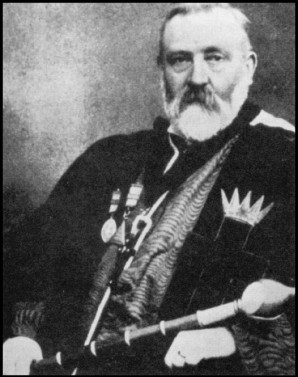
Published Works
Westcott published a respectable volume of work, in both the esoteric and medical fields. He translated many works including the famous Qabalisitc text, Sepher Yetzirah (1887), and a translation of Eliphas Levi's The Magical Ritual of the Sanctum Regnum (1896). Westcott, aided by members of the R.R. et A.C. edited a series of hermetic and gnostic texts and published them in his Collectanea Hermetica which was used to supplement the teachings of the Golden Dawn. He also printed a series of papers for the S.R.I.A., including Numbers, Their Occult Power and Mystic Virtue, An Introduction to the Study of the Kabalah and The Rosicrucians: Past and Present, At home and Abroad .
Sources
Gilbert, R.A., The Golden Dawn and the Esoteric Section , London: Theosophical History Centre, 1987.
Gilbert, R.A., The Golden Dawn Scrapbook . York Beach, ME: Samuel Weiser, Inc., 1997
Gilbert, R.A., The Golden Dawn, Twilight of the Magicians . Great Britain, The Aquarian Press, 1983.
History of the S,R.I.A.: A History of Rosicrucian Thought and of the Societas Rosicruciana in Anglia . Privately printed for the S.R.I.A. in 1987.
Howe, Ellic. The Magicians of the Golden Dawn , New York, Samuel Weiser, Inc., 1972.
Küntz, Darcy. The Golden Dawn Source Book , Edmonds, WA: Holmes Publishing Group, 1996.
Runyon, Carroll, Seecrets of the Golden Dawn Cypher Manuscript , Pasadena, CA: C.H.S., Inc, 1997
Westcott, William Wynn. Collectanea Hermetica , Introduction by R.A. Gilbert, York Beach ME: Samuel Weiser, Inc. 1998.
Endnotes
[1] “From Cipher to Enigma: The Role of William Wynn Westcott in the Creation of the Hermetic Order of the Golden Dawn.” Published in Secrets of the Golden Dawn Cypher Manuscript.
[2] Howe, 34.
[3] Howe, 37.
Copyright © 2000 Soror S.J.
Article reproduced by kind permission of The Hermetic Order of the Golden Dawn®
Original article may be found at:
http://www.hermeticgoldendawn.org
|



